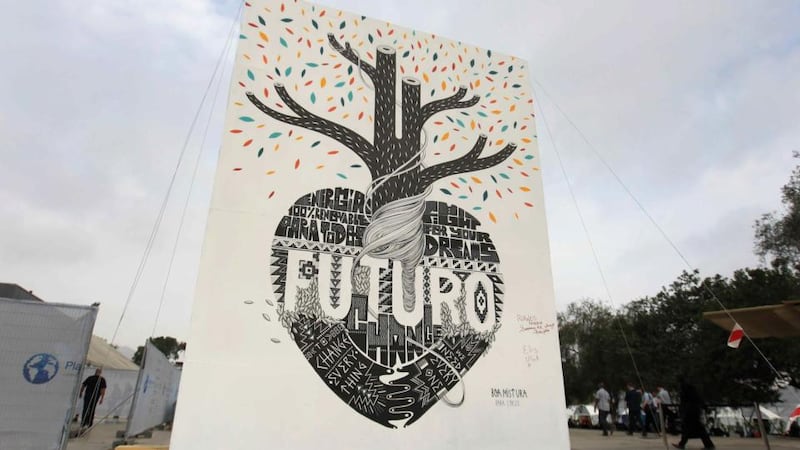About 190 nations have agreed the building blocks of a new-style global deal due in 2015 to combat climate change amid warnings that far tougher action will be needed to limit rising world temperatures.
Under the Lima deal, governments will submit national plans for reining in greenhouse gas emissions by an informal deadline of March 31st 2015 to form the basis of a global agreement due at a summit in Paris in a year’s time.
Most of the tough decisions about how to slow climate change were postponed until then. “Much remains to be done in Paris next year,” French foreign munister Laurent Fabius said.

The texts, agreed two days into overtime after two weeks of talks came close to collapsing, appeased emerging economies led by China and India, concerned that previous drafts imposed too heavy a burden on emerging economies compared to the rich.
“We’ve got what we wanted,” said Indian environment minister Prakash Javedekar, who said the text preserved the notion enshrined in a 1992 climate convention that the rich have to lead the way in making cuts in greenhouse gas emissions.
It also satisfied rich nations led by the United States who say it is time for fast-growing emerging economies to rein in fast-rising emissions. China is now the biggest greenhouse gas emitter ahead of the United States, the EU and India.
US special climate change envoy Todd Stern said that a joint US-China deal last month to curb emissions had helped show new ways to bridge a standoff between rich and poor. “The announcement of a few weeks ago came in handy here,” he said.
"This is a good document to pave the way to Paris," EU Climate Action and Energy Commissioner Miguel Arias Canete told Reuters at the end of two weeks of talks about limiting more floods, desertification, heat waves and rising sea levels.
Minister for the Environment Alan Kelly welcomed the agreement which marked a “sends a signal to all that parties are serious about delivering in Paris in December 2015”.
“Next year will require further efforts by all parties to reach agreement on a negotiating text” he said. “It will be a difficult year, but one that will see a new global and ambitious agreement on climate change applicable to al parties”.
Minister for Energy Alex White represented Ireland at the conference and stressed
Some environmental groups, however, said the deal, reached at a tent city on a military base in Lima, was far too weak.
“We went from weak to weaker to weakest,” Samantha Smith of the WWF conservation group said of successive drafts at the Lima talks. “This leaves a huge amount for governments and everyone else to do in the next 12 months.”
New Style
The idea of a UN deal with obligations for all nations marks a shift from the 1997 Kyoto Protocol, which obliges only the rich to cut emissions.
“What we are seeing is a new form of international cooperation on climate change where all countries participate with a new set of rules,” said Jennifer Morgan of the World Resources Institute think-tank.
But it leaves a lot of work for 2015.
“I am not going to say it will be a walk in the park in Paris,” said Ed Davey, British secretary of state for energy and climate change.
The UN Climate Change Secretariat say that the combined pledges by all nations likely in Paris will be too weak to achieve a goal of limiting warming to an agreed goal of 2 degrees Celsius above pre-industrial times.
Under the Lima deal, national pledges will be added up in a report by November 1st 2015, to assess their aggregate effect in slowing rising temperatures.
But, after opposition led by China, there will not be a full-blown review to compare each nation’s level of ambition. In a deal with the United States last month, China agreed to cap its emissions by around 2030.
And the text lays out a vast range of options for the Paris accord, including the possibility of aiming for zero net global emissions by 2100 or earlier in a drastic shift from fossil fuels towards renewable energies such as wind and solar power.
Reuters









